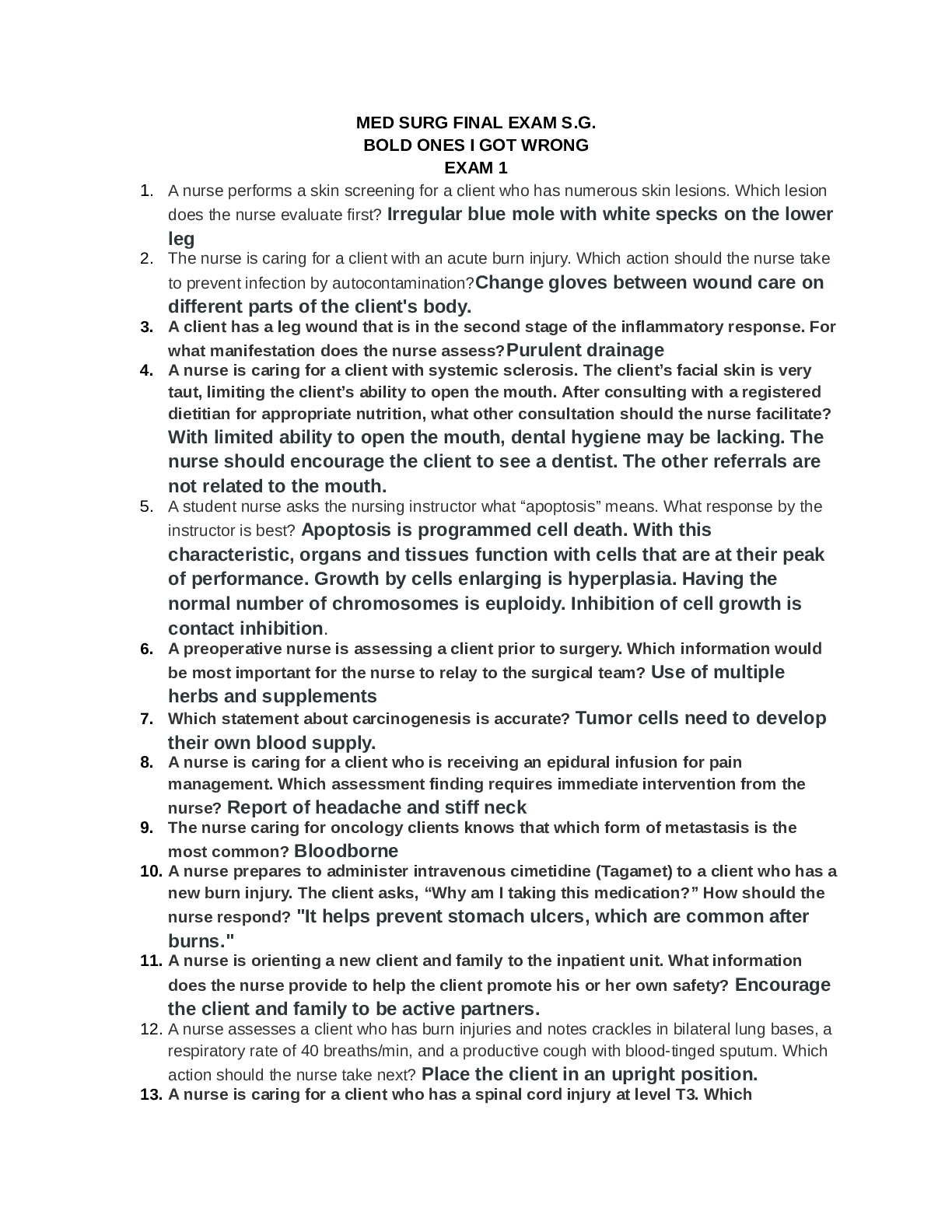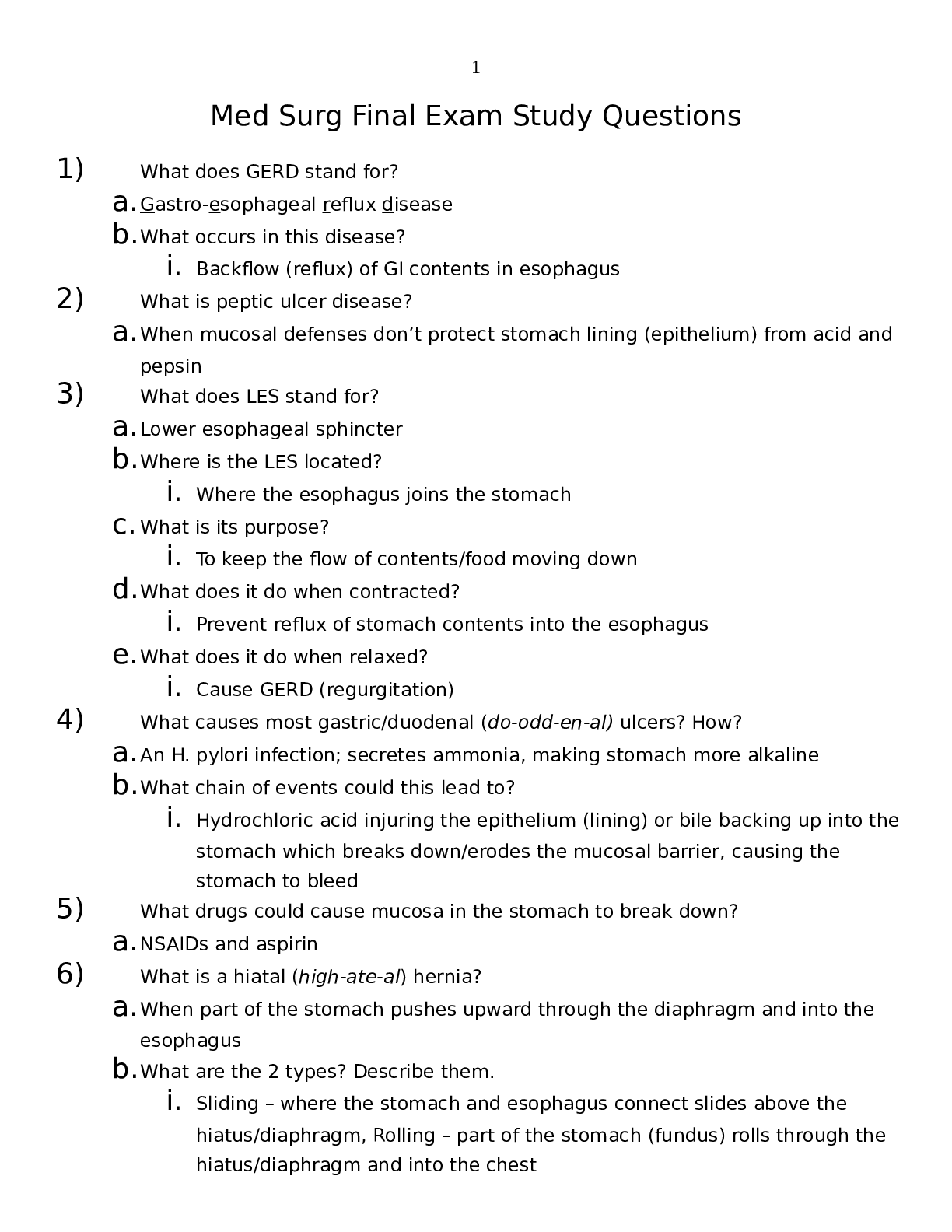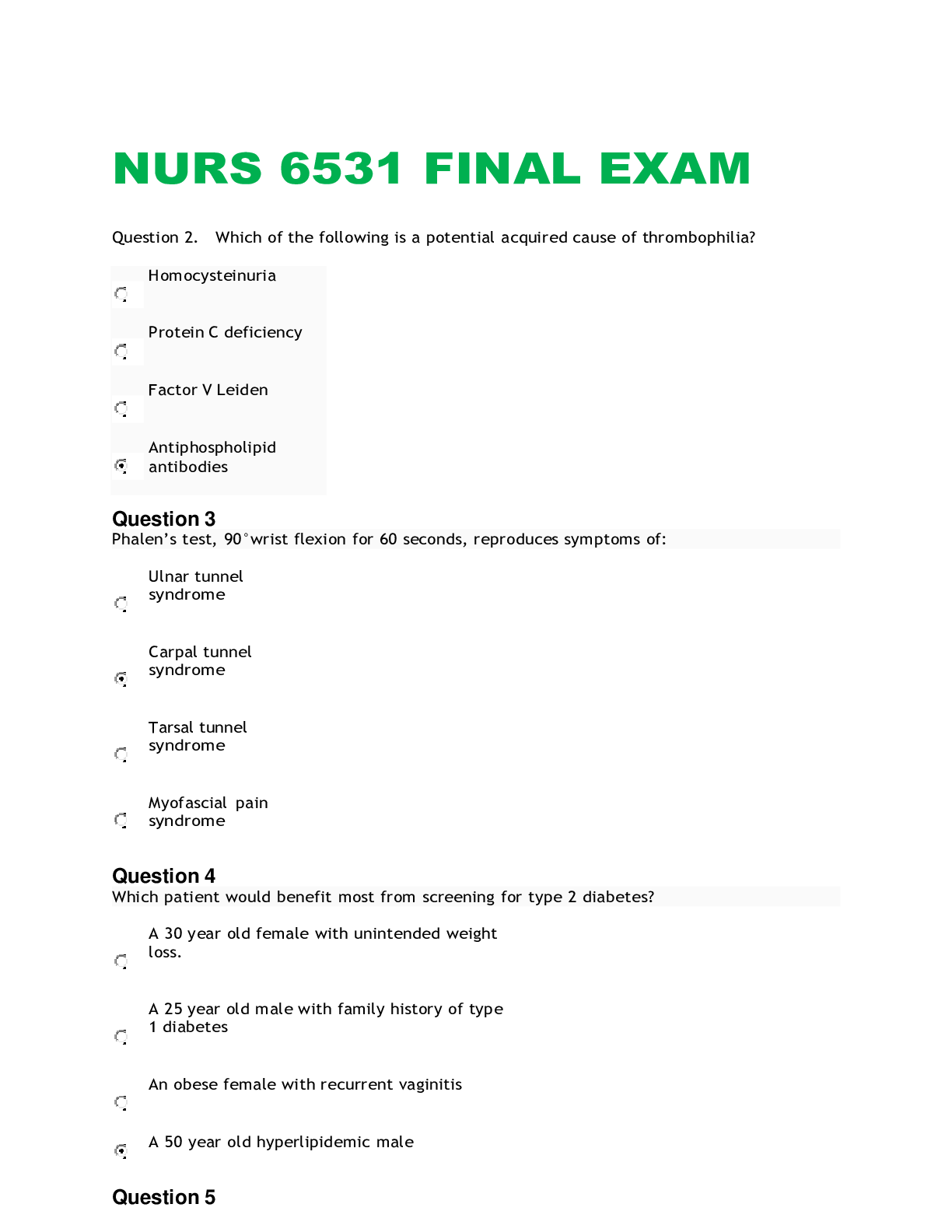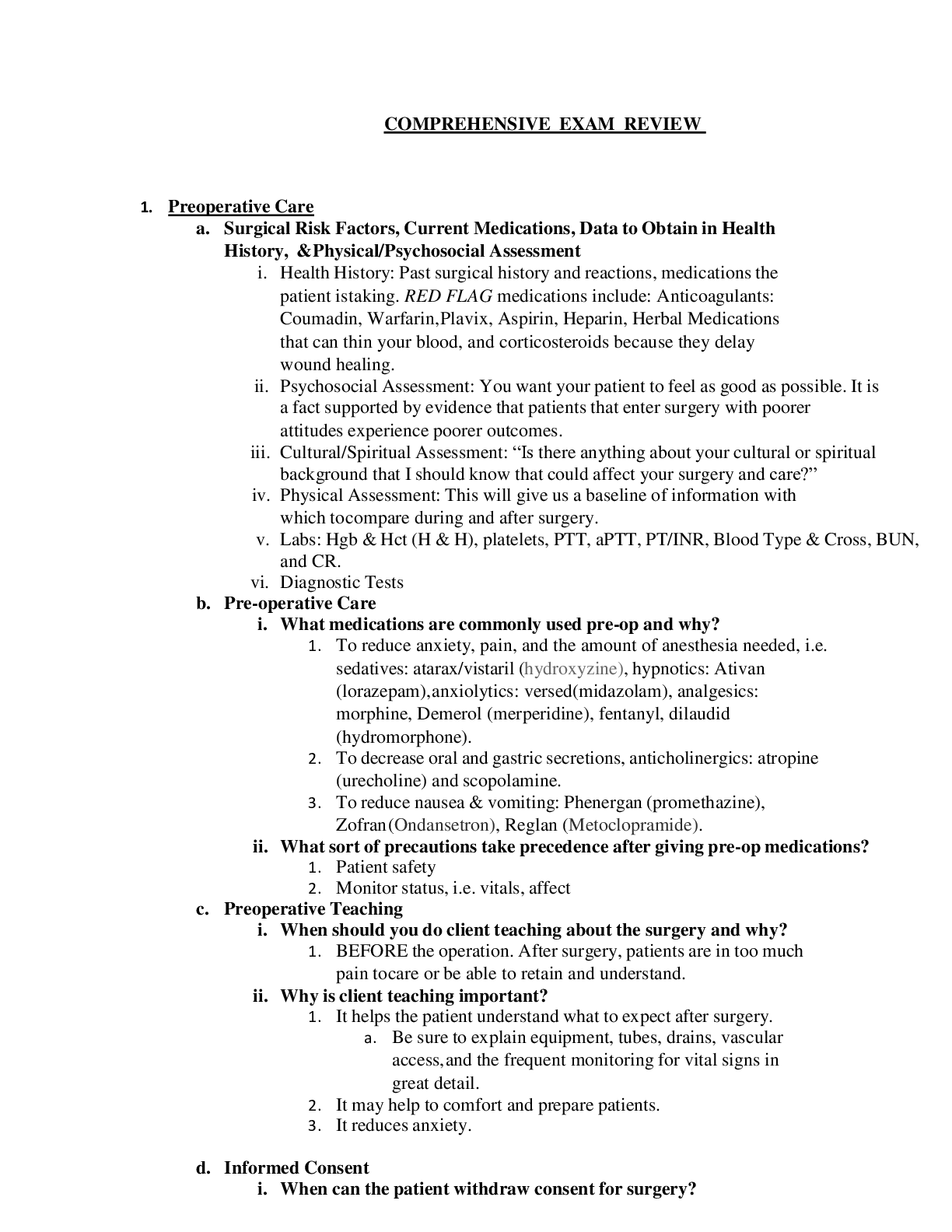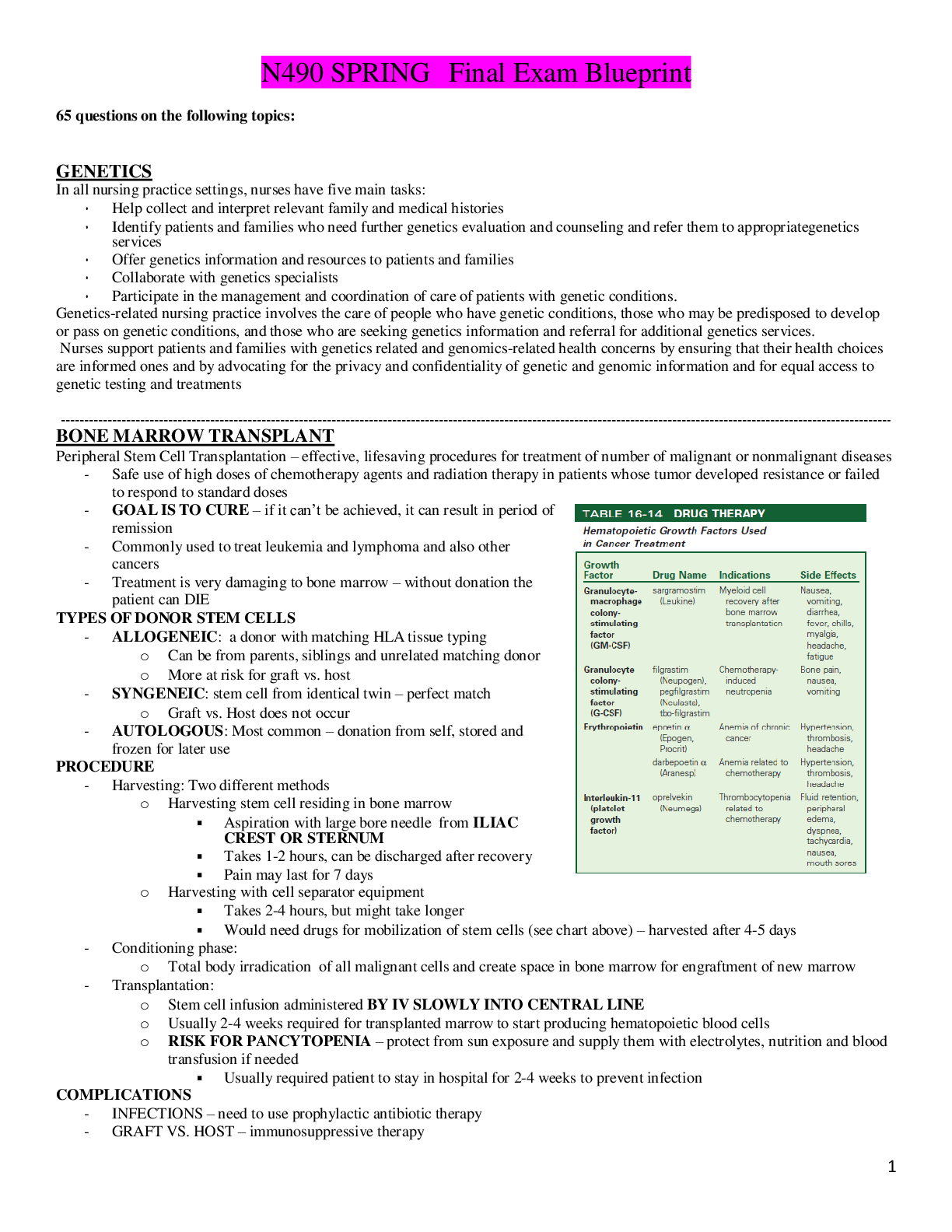*NURSING > MED-SURG EXAM > MED SURG 201 FINAL EXAM FINAL EXAM QUESTIONS, ANSWERS (EXPLAINED) (All)
MED SURG 201 FINAL EXAM FINAL EXAM QUESTIONS, ANSWERS (EXPLAINED)
Document Content and Description Below
4. A patient who was admitted to the hospital with hyperglycemia and newly diagnosed diabetes mellitus is scheduled for discharge the second day after admission. When implementing patient teaching, wh... at is the priority action forthe nurse? • Instruct about the increased risk for cardiovascular disease. • Provide detailed information about dietary control of glucose. • Teach glucose self-monitoring and medication administration. • Give information about the effects of exercise on glucose control. ANS: C When time is limited, the nurse should focus on the priorities of teaching. In this situation, the patient should know how to test blood glucose and administer medications to control glucose levels. The patient will need further teaching about the role of diet, exercise, various medications, and the many potential complications of diabetes, but these topics can be addressed through planning for appropriate referrals. • A 75-year-old patient is admitted for pancreatitis. Which tool would be the most appropriate for the nurse to use during the admission assessment? • Drug Abuse Screening Test (DAST-10) • Clinical Institute Withdrawal Assessment of Alcohol Scale, Revised (CIWA-Ar) • Screening Test-Geriatric Version (SMAST-G) • MiniMental State Examination ANS: C Because the abuse of alcohol is a common factor associated with the development of pancreatitis, the first assessment step is to screen for alcohol use using a validated screening questionnaire. The SMAST-G is a short-form alcoholism screening instrument tailored specifically to the needs of the older adult. If the patient scores positively on the SMAST-G, then the CIWA-Ar would be a useful tool for determining treatment. The DAST-10 provides more general information regarding substance use. The Mini-Mental State Examination is used to screen for cognitive impairment. 1. The sister of a patient diagnosed with BRCA gene–related breast cancer asks the nurse, “Do you think I should be tested for the gene?” Which response by the nurse is most appropriate? • “In most cases, breast cancer is not caused by the BRCA gene.” • “It depends on how you will feel if the test is positive for the BRCA gene.” • “There are many things to consider before deciding to have genetic testing.” • “You should decide first whether you are willing to have a bilateral mastectomy.” ANS: C Although presymptomatic testing for genetic disorders allows patients to take action (such as mastectomy) to prevent the development of some genetically caused disorders, patients also need to consider that test results in their medical record may affect insurance, employability, etc. Telling a patient that a decision about mastectomy should be made before testing implies that the nurse has made a judgment about what the patient should do if the test is positive. Although the patient may need to think about her reaction if the test is positive, other issues (e.g., insurance) also should be considered. Although most breast cancers are not related to BRCA gene mutations, the patient with a BRCA gene mutation has a markedly increased risk for breast cancer. 7. The nurse in the outpatient clinic has obtained health histories for these new patients. Which patient may need referral for genetic testing? • 35-year-old patient whose maternal grandparents died after strokes at ages 90 and 96 • 18-year-old patient with a positive pregnancy test whose first child has cerebral palsy • 34-year-old patient who has a sibling with newly diagnosed polycystic kidney disease • 50-year-old patient with a history of cigarette smoking who is complaining of dyspnea ANS: C The adult form of polycystic kidney disease is an autosomal dominant disorder and frequently it is asymptomatic until the patient is older. Presymptomatic testing will give the patient information that will be useful in guiding lifestyle and childbearing choices. The other patients do not have any indication of genetic disorders or need for genetic testing. • An adolescent patient seeks care in the emergency department after sharing needles forheroin injection with a friend who has hepatitis B. To provide immediate protection from infection, what medication will the nurse administer? • Corticosteroids • Gamma globulin • Hepatitis B vaccine [Show More]
Last updated: 1 year ago
Preview 1 out of 108 pages
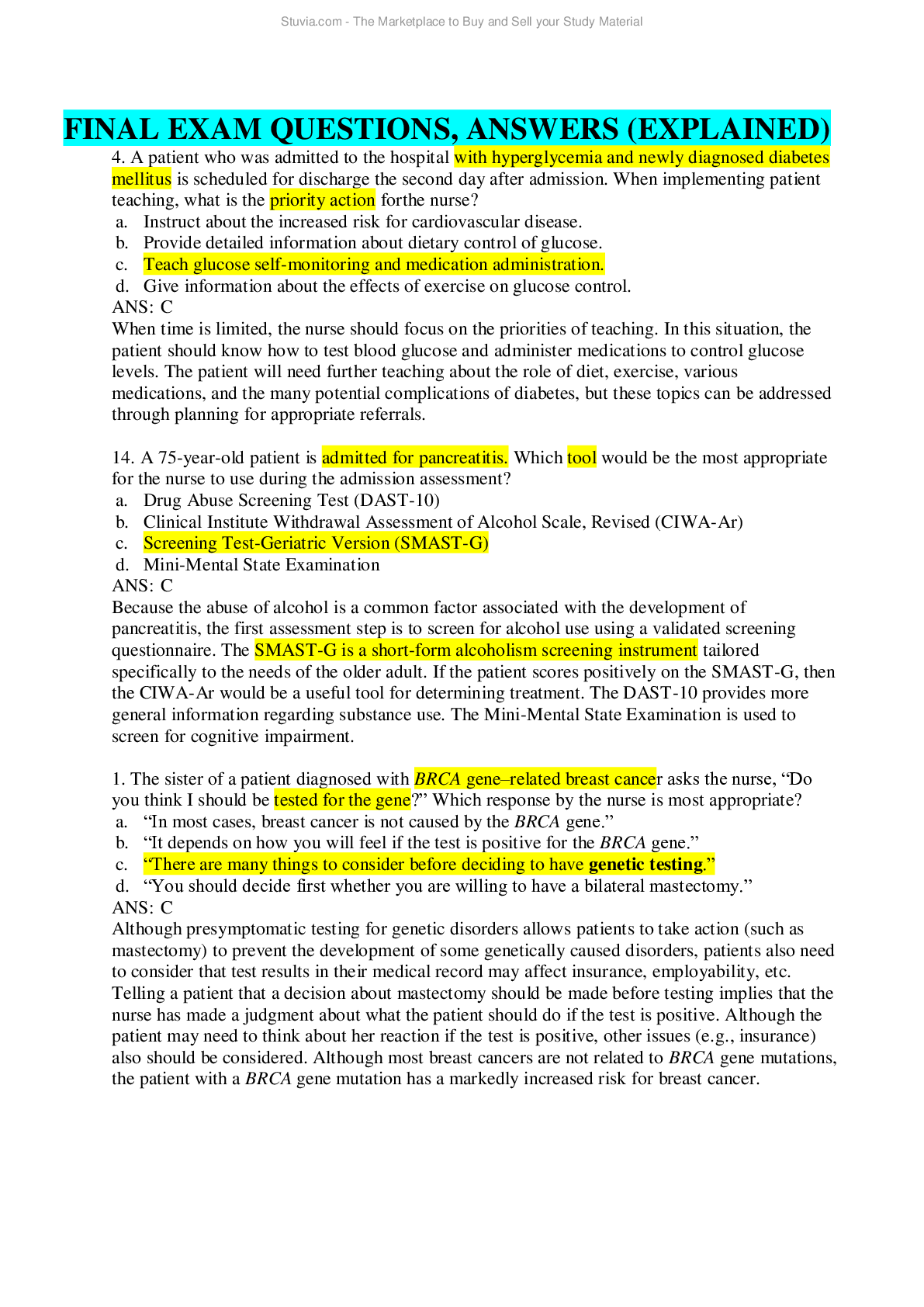
Reviews( 0 )
Document information
Connected school, study & course
About the document
Uploaded On
Apr 08, 2021
Number of pages
108
Written in
Additional information
This document has been written for:
Uploaded
Apr 08, 2021
Downloads
0
Views
49





.png)


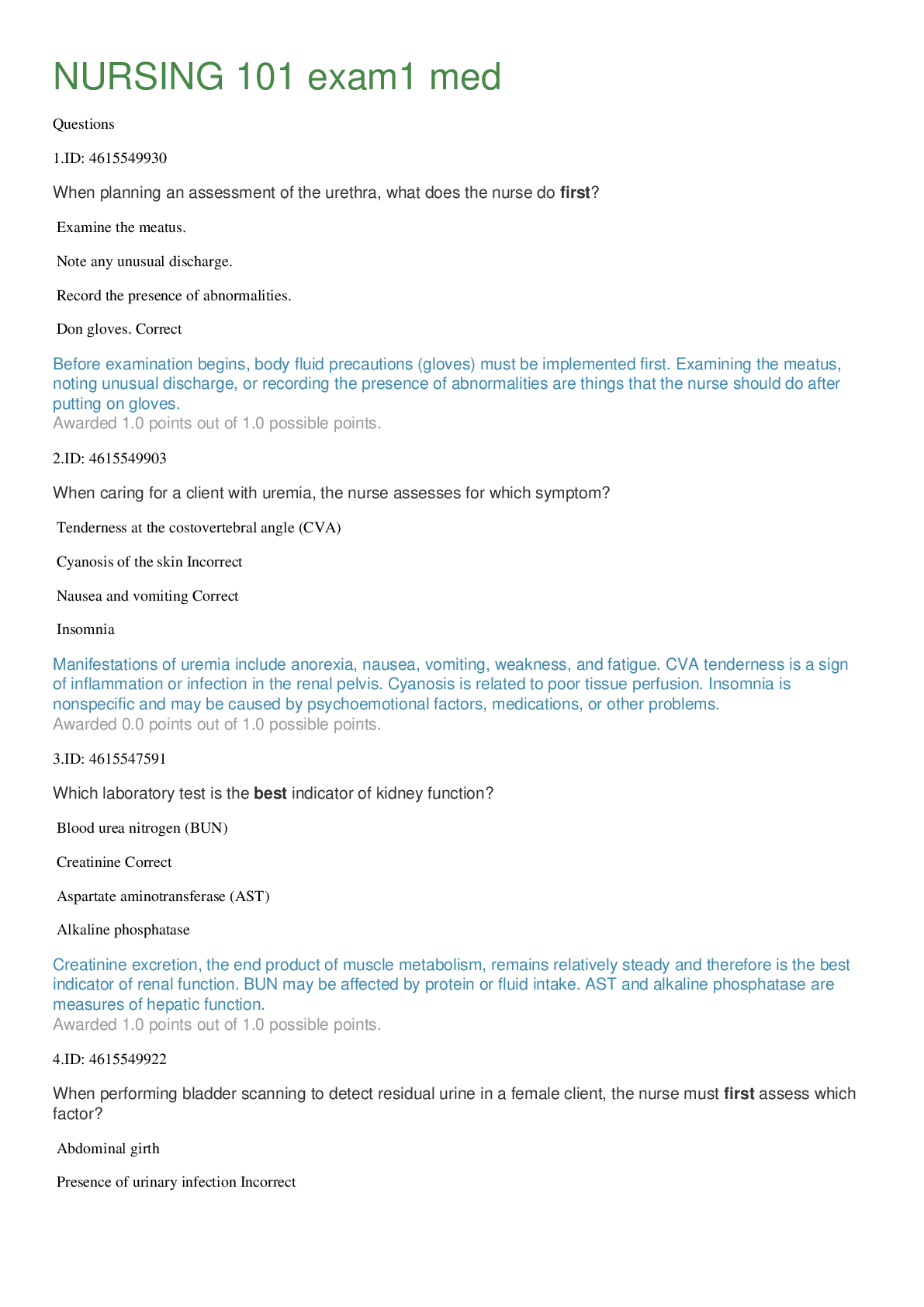
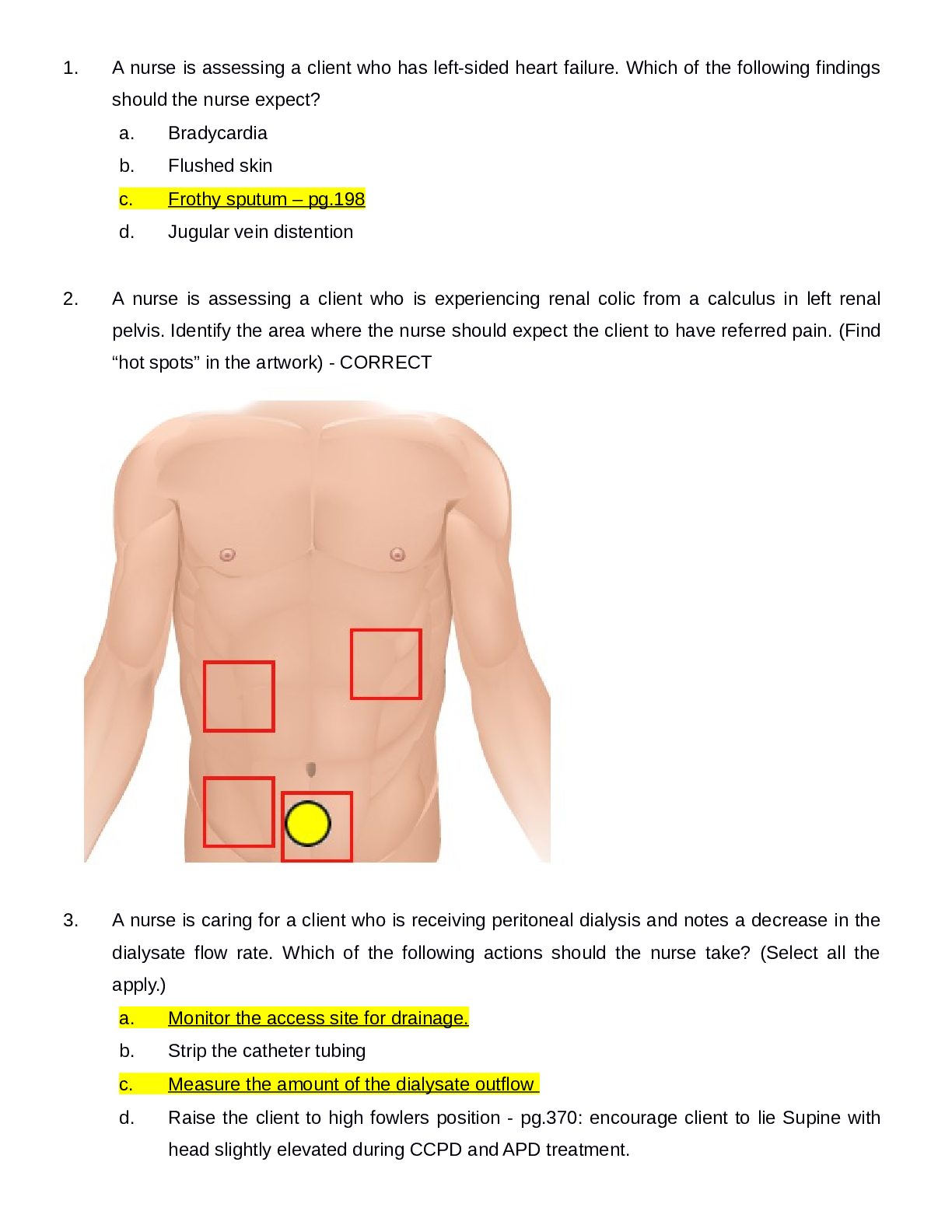
 (1).png)



